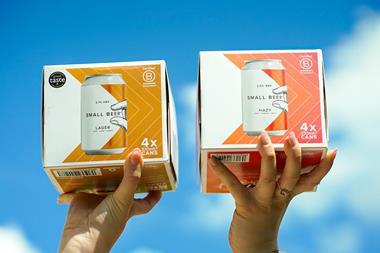Own label wine is narrowing the gap between itself and brands, but beers and spirits are also striding ahead reports Tim Palmer
The own label proposition in the drinks aisles used to be simple. For beers and spirits it was a cheap, average quality alternative to brands which offered retailers an extra profit stream and gave manufacturers a cost effective way of filling their production capacity.
By contrast the own label wine market has been created and nurtured by the multiple retailers. They have dominated it and brought the sector into the mass market. Consumers now consider it part of their weekly shop, something their parents would not have dreamed of.
It was the retailers who popularised wines from the New World. They demanded and got levels of quality and consistency that had some producers sitting up and taking notice.
It is only in the recent past that brands have had a serious role to play. Big operators such as Gallo, Pernod Ricard, BRL Hardy, UDV, Penfold's and Matthew Clark have put serious money behind brands which feature big ranges covering the key price points and the main varietals.
All the signs are that consumers are increasingly opting for the reassurance that these have to offer.
To put this in perspective, own label still has 45% of off-trade wine volumes. But this figure is not increasing while the wine market as a whole is up 6% in the last 12 months.
Brands account for 18% of the market, the rest are proprietary labels from smaller producers. Brands as a whole are increasing their volume share by 11%, but this masks the dominance of the top 10 brands whose growth is closer to 50%. The boundaries have become increasingly blurred with the development of exclusive brands and the introduction of premium imagery.
In the mid 1990s there was added confusion when super cheap tertiary brands were at price points below own label. At the same time the beer market faced upheaval with the flood of stubbies premium products in premium packaging, usually exclusive to individual multiples and sold at rock bottom prices from the continent.
And the market continues to evolve. Last year own label beer's share declined and at Christmas brands made a big impact.
There has also been something of a stigma attached to own label. Most manufacturers don't like to admit they supply the products, or proudly admit they do not.
Scottish Courage, however, set up its own exclusive brands division four years ago. Trading director Jonathan Townsend says: "As long as there is 1012% of beer volumes in own label it is an important part of the market and we are going to take a category approach to it."
Annual own label beer sales are put at 11.6m cases. This is supplemented by an estimated 2.5m cases of retailers exclusive brands. Total value is put at £220m.
"It has grown in value over the last five years but there has been a drift away from own label as the commodity brands have got cheaper. There are now examples of it in every sector including premium lager," says Townsend.
"What we want to do is use the full range of our capabilities at Scottish Courage to provide a competitive offer instore for our customers. The preferred route to take is with a retailer's exclusive brands rather than own label as it offers better profitability."
Townsend explains that the name of the game is building a partnership and getting to grips with what customers want. He makes use of the company's pilot brewery to produce small scale brews so customers can try the proposed product. Scottish Courage also take an overview on consumers' ranges and advise them where the potential gaps are.
{{FOCUS SPECIALS }}
Close menu
- Home
- Buying & Supplying
- Stores
- Channels
- Finance
- People
- Reports
- Events
- Jobs
- Subscribe now
THE GROCER FOCUS ON OWN LABEL: Raising the glass ceiling on
2000-04-22T00:00:00+01:00
Sign in to comment on this article
Not logged in before? Register for FREE guest access today.
You will be able to:
- Read more stories
- Receive daily newsletters
- Comment on stories
Advert









No comments yet